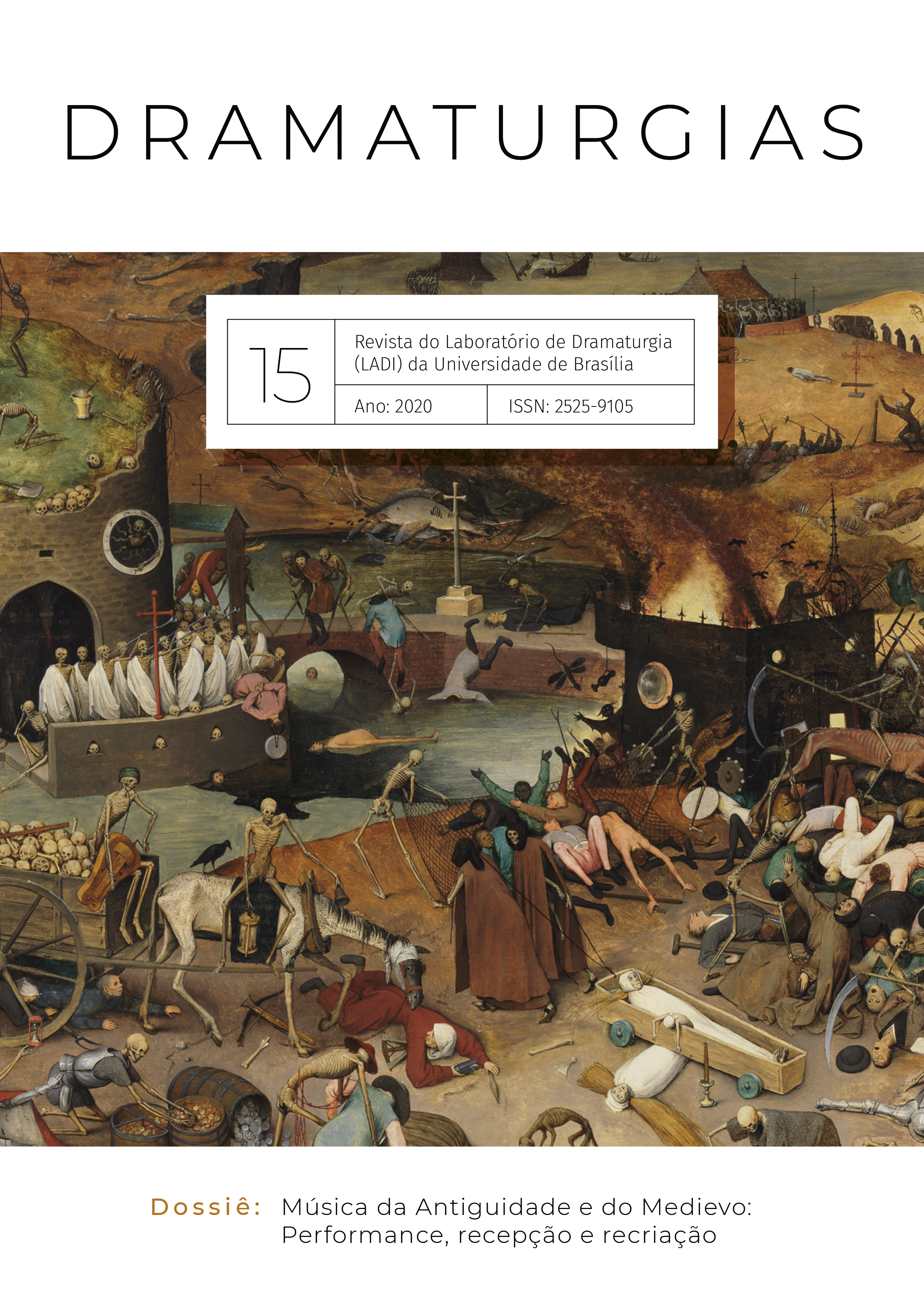“The burning sun sheds its burning rays”, while the serpent, as a protective secret, rests in my room at 59 of the Palace-Hotel in Santa Fé. Anthropological experience and discourse in Wassily Kandinsky and Aby M. Warburg
DOI:
https://doi.org/10.26512/dramaturgias15.35760Keywords:
Kandinsky, Aby Warburg, Visuality, Anthropology, TravellingAbstract
It is not the looking on the vestiges of what was once, but the looking on what is being made that leads Wassily Kandinsky to visit peasants in Vologda, in 1889, and Aby M. Warburg to looking for the place of the Pueblo Indians in New Mexico in 1895. Both are part of the same era. Each person carries their own genetics as an expression of a common European cultural heritage, also marked, and despite this, by living with different religious traditions. Both are to the west and are moving: the first towards the north of Russia, the second towards the south of the USA.
What are they looking for? What encourages the movement of each one to places where they live in authentic conformity with the elements and nature? What moves them towards what may be different is being, even if rooted in traces that the passage of time has not eliminated? As an almost, that is, always leaving out more than they consciously wish, Wassily Kandinsky and Aby M. Warburg observe, study and catalogue, classify what is strange to them and fascinate them in the lives of other human beings.
The future plastic artist and the already Art Historian, at one time and although in different places, take for themselves, for once in their lives, the flesh of anthropologists and ethnologists. A strong experience that will last forever in your aesthetic conceptions!
We will follow these paths through what is left written and captured by visual images in <Wologda Tagebuch> by Kandinsky and Schlangenritual ”“ Ein Reisebericht by Aby M. Warburg.
Downloads
References
Vassilii Surikov, Ecke mit Ikonen im Bauernhaus, 1883. Studie für Menshikov bei Berisov. Aquarell. 23,8 x 33,8 cm Staatliche Galerie Tretyakov, Moskau. Photo: I. Kozlova. 1991.
Bauernstube Nordrussland, um 1850 Russisches Museum, St. Petersburg
Wassily Kandinsky, Brotsegen, um 1889. Aquarell und Bleistift, Entwurf. 18,3 x 24,6 cm Staatliche Galerie Tretyakov, Moskau.
Wassily Kandinsky, Ludwigskirche in München, 1908 ӈl auf Pappe. 67,3 x 96 cm
Sammlung Cármen Thyssen-Bornemisza
Museum Thyssen-Bornemiza, Madrid.
Badehaus und Privatbadezimmer im Sanatorium »Bellevue«, Kreuzlingen Universitáˆtsarchiv Tübingen, Signatur 442/364.
Passage, Purification
Hopi Indianer, Digital composite, 1997
Victor Masayesva Jr., Husk of Time ”“ The Photographs of Victor Masayesva, Tucson,
The University of Arizona Press, 2006, S. 69.
Cleo Jurino, Kosmologische Darstellung, Santa Fé 1896, mit Anmerkungen von Warburg Warburg Institute Archive, London
Andy Goldsworthy, black river / hard sand / carved and dug / long hot day /becoming cloudy
Galisteo, New Mexico 16 July 1999
Downloads
Published
How to Cite
Issue
Section
License
Copyright (c) 2020 Anabela Mendes

This work is licensed under a Creative Commons Attribution-ShareAlike 4.0 International License.
Autores mantém os direitos autorais e concedem à revista o direito de primeira publicação, com o trabalho simultaneamente licenciado sob a Licença Creative Commons Attribution que permite o compartilhamento do trabalho com reconhecimento da autoria e publicação inicial nesta revista.



